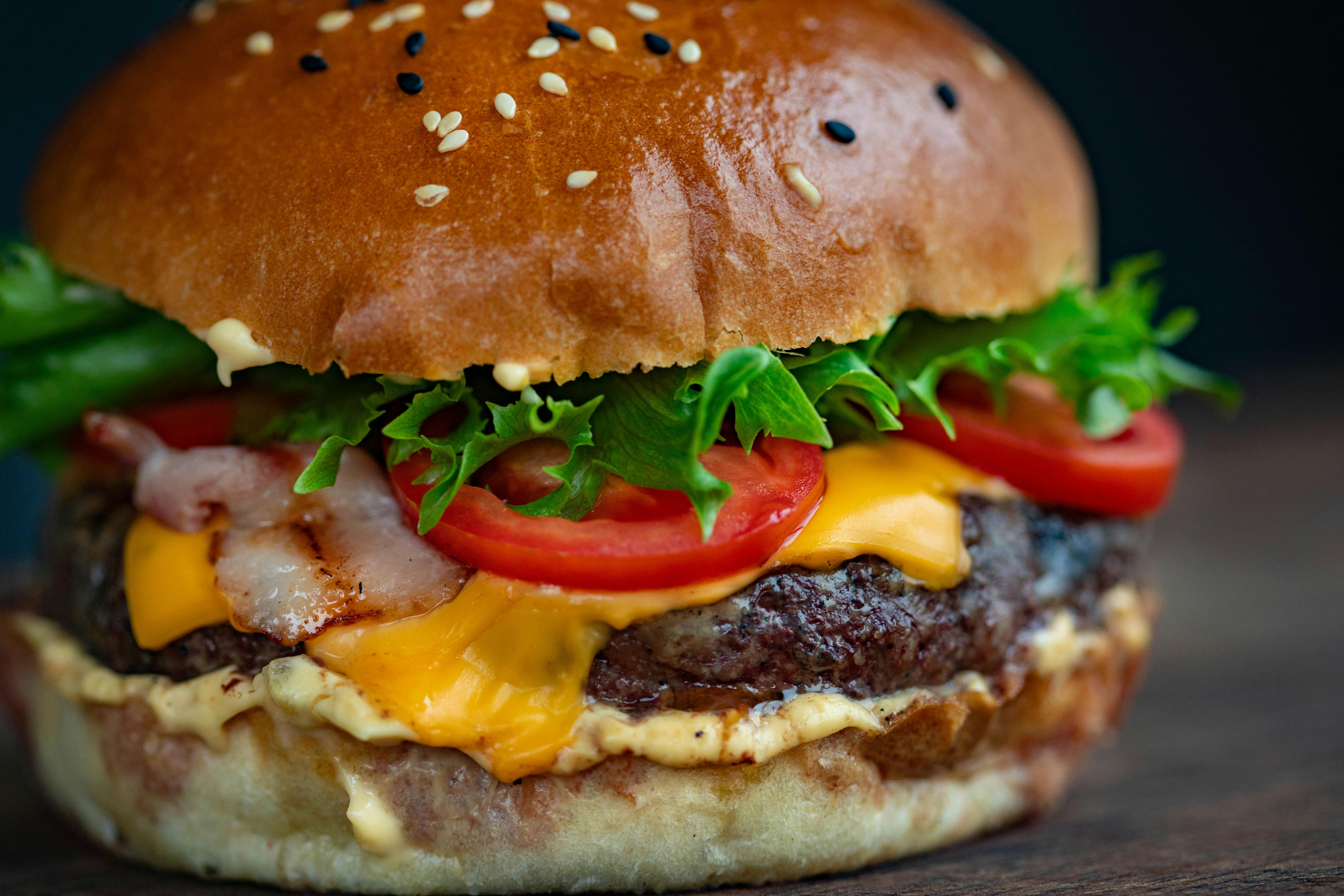Fast food has transcended its humble origins to become a global culinary phenomenon, deeply ingrained in the daily lives of billions. From quick lunches to late-night cravings, these convenient eateries offer a taste of home and a window into local preferences, no matter where you are in the world. But which brands truly dominate the global landscape, and how do their offerings adapt to diverse palates?
This article will take you on a flavorful journey, exploring the most popular fast-food brands across different continents. We’ll uncover fascinating insights into market dominance, cultural adaptations, and the unique flavors that define fast food in various nations. Prepare to discover how global giants and local heroes alike cater to the world’s ever-evolving appetite for speed and taste.
The Global Phenomenon of Fast Food: More Than Just a Meal
Fast food’s rise to global prominence is a testament to its universal appeal: convenience, affordability, and consistent taste. What began as a uniquely American concept has evolved into a diverse industry, with brands adapting their menus and marketing strategies to resonate with local cultures and dietary preferences. This adaptability is key to their widespread success, allowing them to thrive in vastly different markets.
Defining Fast Food Culture
Fast food culture varies significantly from one country to another. In some regions, it’s a quick, on-the-go meal, while in others, it can be a family dining experience or a social gathering spot. Brands often introduce region-specific items, such as the McSpicy Paneer in India or the Teriyaki Burger in Japan, to cater to local tastes and ingredient availability, demonstrating a deep understanding of their target markets.

North America: Home of the Giants
North America, particularly the United States, is widely considered the birthplace of modern fast food. Brands like McDonald’s, Burger King, KFC, and Subway originated here and have since expanded globally. These brands continue to hold significant market share in their home territory, driven by extensive marketing, widespread accessibility, and a constant evolution of their menus to meet changing consumer demands.
Dominant Players and Culinary Innovations
McDonald’s remains a titan, with thousands of locations across the U.S. and Canada. Its success lies in its consistent branding and ability to introduce new items while maintaining classic favorites. Subway, known for its customizable sandwiches, boasts the largest number of restaurant locations worldwide, though its market share varies by region. KFC’s fried chicken is a staple, especially in the Southern U.S., while Burger King competes fiercely with its flame-grilled burgers.
- McDonald’s: Iconic burgers, fries, and breakfast items.
- Subway: Freshly made sandwiches and salads.
- KFC: Original Recipe fried chicken.
- Burger King: Whopper and flame-grilled taste.
Asia’s Diverse Fast Food Landscape
Asia presents a fascinating and highly competitive fast-food market, where global chains often face strong local competitors. While American brands have made significant inroads, their success often hinges on their ability to localize menus and adapt to unique cultural preferences. This has led to a vibrant mix of international and homegrown fast-food experiences.
KFC’s Unrivaled Dominance in China
In China, KFC (Kentucky Fried Chicken) holds an extraordinary market position, often outperforming McDonald’s. Its success is attributed to early market entry, aggressive expansion, and a deep understanding of Chinese tastes, offering items like congee for breakfast and spicy chicken burgers. This strategic localization has cemented its status as a leading fast-food choice for Chinese consumers. For more on KFC’s strategy in China, you can read this Forbes article on KFC’s China success.
Japan’s Unique Fast Food Culture
Japan boasts a highly developed fast-food scene with both international and beloved local chains. MOS Burger, a Japanese-born chain, is famous for its fresh ingredients and unique rice burgers, often seen as a healthier alternative. Lotteria, another prominent Japanese chain, offers a diverse menu including shrimp burgers and unique seasonal items. McDonald’s also thrives, but with a distinct Japanese flair in its menu offerings.

Europe’s Unique Fast Food Scene
Europe’s fast-food landscape is a blend of global brands and strong regional players, often reflecting local culinary traditions. While McDonald’s and KFC are present, they frequently compete with established local favorites that offer a distinct European fast-food experience. The emphasis can sometimes be on quality ingredients or traditional preparation methods, even within a fast-food context.
From German Currywurst to British Greggs
In Germany, the humble Currywurst stand is a quintessential fast-food experience, offering sausages smothered in a spiced ketchup sauce. While not a global chain, its cultural significance is immense. The UK sees the widespread popularity of Greggs, a bakery chain famous for its sausage rolls and pasties, which are a staple for many British commuters. France has its own fast-food chains like Quick, which competes with global giants by offering a more localized burger experience.
“Fast food in Europe often reflects a balance between global trends and deeply rooted national culinary identities. It’s not just about speed, but also about integrating local flavors and traditions.”
Beyond the Big Names: Emerging Markets & Local Tastes
Beyond the established markets, emerging economies in South America, Africa, and parts of Asia are witnessing rapid growth in the fast-food sector. Here, local brands often hold significant sway, having tailored their offerings to specific regional tastes and economic conditions. This dynamic environment showcases the incredible adaptability and potential for innovation within the fast-food industry.
South America’s Homegrown Heroes
In Brazil, Habib’s is a hugely popular fast-food chain specializing in Middle Eastern-inspired dishes like esfihas (open-faced savory pastries) and kibbeh, offering a distinct alternative to traditional burgers and fries. This demonstrates how local chains can carve out significant market share by offering unique, culturally relevant menus. Similarly, in other South American countries, local empanada or ‘arepa’ fast-food joints often compete effectively with international brands.
The Future of Global Fast Food
The future of fast food is likely to be characterized by continued localization, increased focus on healthier options, and the integration of technology for ordering and delivery. As global tastes evolve and environmental concerns grow, brands will need to innovate further to maintain their relevance and appeal across diverse populations. Plant-based options, for instance, are rapidly gaining traction worldwide.

Global Fast Food Market Overview (2025 Estimates)
To provide a clearer picture of the fast food landscape, here’s a simplified overview of market presence by region, highlighting the diverse nature of consumer preferences and brand dominance. This table reflects general trends and popular perceptions rather than precise market share data, which can fluctuate rapidly.
| Region | Dominant Global Brands | Notable Local/Regional Brands |
|---|---|---|
| North America | McDonald’s, Subway, KFC, Burger King | In-N-Out Burger (West US), Chick-fil-A (US), Tim Hortons (Canada) |
| Asia | KFC (China), McDonald’s, Pizza Hut | MOS Burger (Japan), Lotteria (Japan/Korea), Jollibee (Philippines) |
| Europe | McDonald’s, KFC, Subway | Greggs (UK), Quick (France), Nordsee (Germany) |
| South America | McDonald’s, Burger King, Subway | Habib’s (Brazil), Giraffas (Brazil), Bembos (Peru) |
| Africa & Middle East | KFC, McDonald’s, Pizza Hut | Nando’s (South Africa), Al Baik (Saudi Arabia) |
Conclusion: A World of Flavors, Fast
The world of fast food is a vibrant tapestry of global giants and beloved local heroes, each adapting to the unique tastes and cultural nuances of their respective markets. From the iconic burgers of America to the spicy chicken of China and the savory pastries of Brazil, fast food continues to evolve, offering convenience and comfort to billions.
As consumers increasingly seek both familiarity and novelty, fast-food brands will continue to innovate, blending global strategies with local flavors. This dynamic interplay ensures that the industry remains a fascinating reflection of our diverse culinary world.
Your Next Fast Food Adventure Awaits!
The next time you travel, step outside your comfort zone and try a local fast-food chain. You might discover a new favorite that offers a unique taste of the culture. What’s your favorite international fast-food experience?
Share your thoughts and recommendations in the comments below!
Further Reading:
- Statista: Fast Food – Worldwide (Provides market insights and forecasts for the global fast food industry.)
- Euromonitor International: Fast Food in the World (Offers detailed analysis of fast food trends and market dynamics across various countries.)
